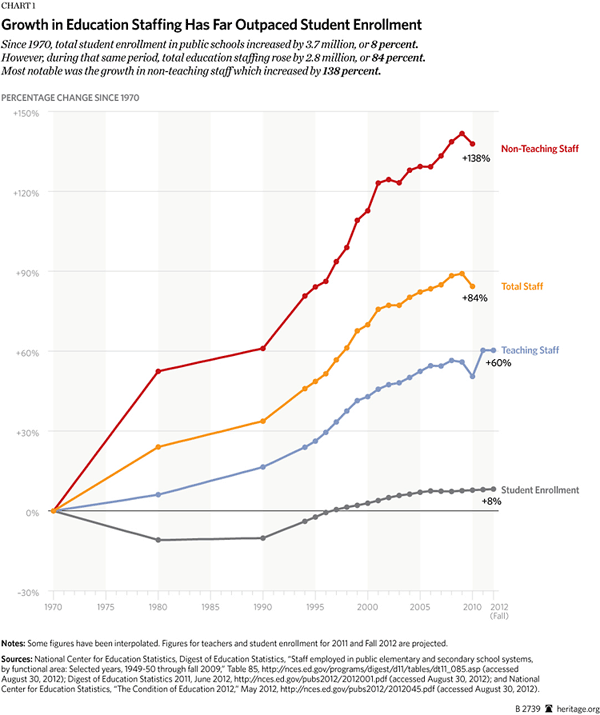During an interview on “Face the Nation” this past Sunday, Education Secretary Arne Duncan employed the Obama Administration’s Chicken Little sequester rhetoric, this time about teacher jobs:
It just means a lot more children will not get the kinds of services and opportunities they need, and as many as 40,000 teachers could lose their jobs….There are literally teachers now who are getting pink slips, who are getting notices that they can’t come back this fall.
The statement, as The Washington Post’s Fact Checker columnist Glenn Kessler reports, is just plain false. In fact, the Fact Checker awarded Duncan four “Pinocchios” yesterday, stating: “Oddly, however, the Education Department for days was unable to cough up the name of a single school district where these notices had been delivered. Then, on Wednesday, Duncan appeared before the White House press corps and produced a name—Kanawha County in West Virginia—with a major league caveat. ‘Whether it’s all sequester-related, I don’t know,’ he said.”
Kessler continues:
In fact, no one in the county seemed to know what Duncan was talking about, including the education reporters who cover the school district for the Charleston, W.V., newspapers. “There’s very little sequestration-related panic, at least on the education side of things,” one reporter said.
The Administration’s sky-is-falling rhetoric on education cuts is misleading to a far greater extent than Duncan’s false teacher layoff claims. The Administration couches any cuts in a dire light, without acknowledging the significant increases in spending at the Department of Education over the years. The number of non-teaching staff, for instance, has exploded.
In 1980, the Department of Education’s budget was $11.6 billion (which equates to approximately $31.7 billion in constant 2012 dollars). By the time President Obama took office in 2009, the budget had increased to $67 billion ($41 billion for elementary and secondary education). In 2011, the budget was $68.3 billion for the agency, and the President’s 2013 request would take spending to $70 billion.
Moreover, the Administration’s claims regarding sequestration provide an opportunity to examine trends in the education workforce over the past few decades, particularly the non-teaching staff in public schools across the country.
Teaching and non-teaching staff positions in public schools across the country have increased at far greater rates than student enrollment over the past four decades. From 1970 to 2010, student enrollment increased by a modest 7.8 percent, while the number of public-school teachers increased by 60 percent. During the same time, non-teaching staff positions increased by 138 percent, and total staffing grew by 84 percent. Teachers now comprise just half of all public-education employees. A new report by the Friedman Foundation for Educational Choice shows specifically that:
Twenty-one “Top-Heavy States” employ fewer teachers than other non-teaching personnel. Thus, those 21 states have more administrators and other non-teaching staff on the public payroll than teachers. Virginia “leads the way” with 60,737 more administrators and other non-teaching staff than teachers in its public schools.
Cuts to the Department of Education’s budget would be far from devastating. In fact, they’re long overdue. It’s time to eliminate a multitude of ineffective and duplicative programs and implement ways to better target spending to ensure student needs are met. Because discretionary departments like this could use some cuts, Heritage has recommended offsetting cuts in defense that will hurt readiness and reduce national security capabilities.

